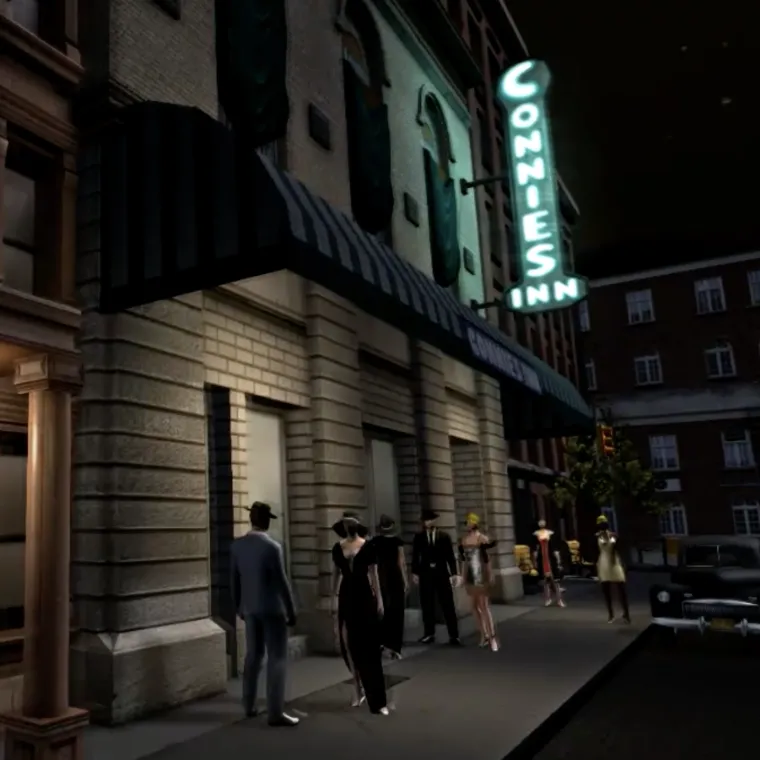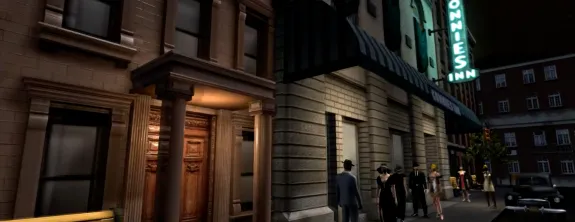The Virtual Harlem Project is a collaborative learning network whose purpose is to study the Harlem Renaissance, an important period in African American literary history, through the construction of a virtual reality scenario that represents Harlem, New York, as it existed between the 1920-30s.
As you step onto the streets of Virtual Harlem, a trolley car full of people passes by, moving through a street filled with Model-Ts. Straight ahead, the Lafayette Theater is an obvious attraction, with an all-black cast playing in the version of Macbeth produced by Orson Welles. You can hear the sounds of dogs barking in the street and people laughing and walking by. Taking the trolley and getting off at the LaFayette stop, you can hear a portion of Macbeth’s infamous monologue as he holds his bloody dagger, while the cast practices during the day.
Taking the trolley is the fastest way to get around Harlem, but walking will take you into the clubs to watch live performances of jazz, blues, ragtime, and classical music. The Bamboo Inn, home of jazz improvisation, and the Corner Bar, which was an interracial club, are among the many establishments and visible landmarks. Walking through the streets by day, you notice the entrepreneurial life of the city streets. You can pass street vendors selling their wares, and as you approach one, he will start to call out his jingle, “the meat pie man is a mighty fine man.” These jingles or street chants were a popular form of entertainment and are the origin of the commercial jingle. Walking also lets you explore Harlem’s alleyways, where you might happen upon two men playing checkers or telling hoodoo stories (the US version of voodoo) and involve the sharing of herbal recipes, love potions, trickster tales, or other kinds of spiritualisms. As students hear these stories, the instructor can tell them of the history of hoodoo as a kind of folklore developed by slaves to accommodate their new surroundings.


